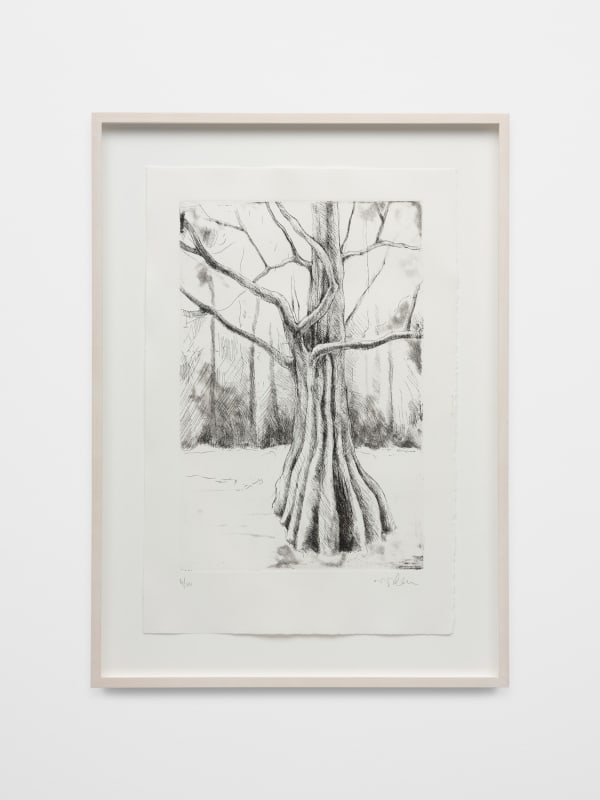Didier William: Beyond the Bodies’ Edge
-

-
Altman Siegel is excited to announce Beyond the Bodies’ Edge, Didier William’s second solo show in San Francisco. This exhibition shows three copper-etched prints of cypress trees native to the Southeastern and Gulf Coastal Plains. In his artwork, William unpacks the systems, codes, and traditions that mark cultural identity. For this project, William took several research trips to the Atchafalaya Basin in Louisiana to better understand the direct ancestral relationship between Haiti and New Orleans through the eyes of its unique ecological terrain.
-
-
The Taxodium distichum, also known as the “wood eternal” or bald cypress, is naturally resistant to erosion and decay and can adapt to various soil conditions. As a species with a lifespan of 600 - 1,200 years, the bald cypress bore witness to significant historical events, including the Haitian emigration to the United States and Louisiana following the Haitian Revolution around the turn of the 19th century. The Haitian Revolution, the largest slave uprising since Spartacus' revolt against the Roman Republic (73-71 BCE), challenged entrenched European beliefs about alleged Black inferiority and enslaved peoples' ability to achieve and maintain their freedom. The organizational scope and tenacity of the revolt significantly impacted slave owners globally. Further, the Revolution substantially weakened France’s financial resources, leading to Napoleon’s sale of the Louisiana Territory to the United States in 1803. The Louisiana Purchase nearly doubled the size of the country at the time, extending the United States sovereignty across the Mississippi River and adding the bald cypress to our country’s ecological dominion.
-
-
 Didier William, Cypress 3 (detail), 2024, Copper Etching, with spit bite on Rives BFK Paper, 22 1/2 x 15 in, 57.1 x 38.1 cm
Didier William, Cypress 3 (detail), 2024, Copper Etching, with spit bite on Rives BFK Paper, 22 1/2 x 15 in, 57.1 x 38.1 cm -
-
 William's exploration of the cypress is not limited to this exhibition. He is expanding his interest into a series of large-scale paintings and sculptures for Prospect New Orleans and a forthcoming body of work for Altman Siegel, which will be shown in 2025.
William's exploration of the cypress is not limited to this exhibition. He is expanding his interest into a series of large-scale paintings and sculptures for Prospect New Orleans and a forthcoming body of work for Altman Siegel, which will be shown in 2025. -

-
 Photography by Ryan Collerd
Photography by Ryan Collerd








